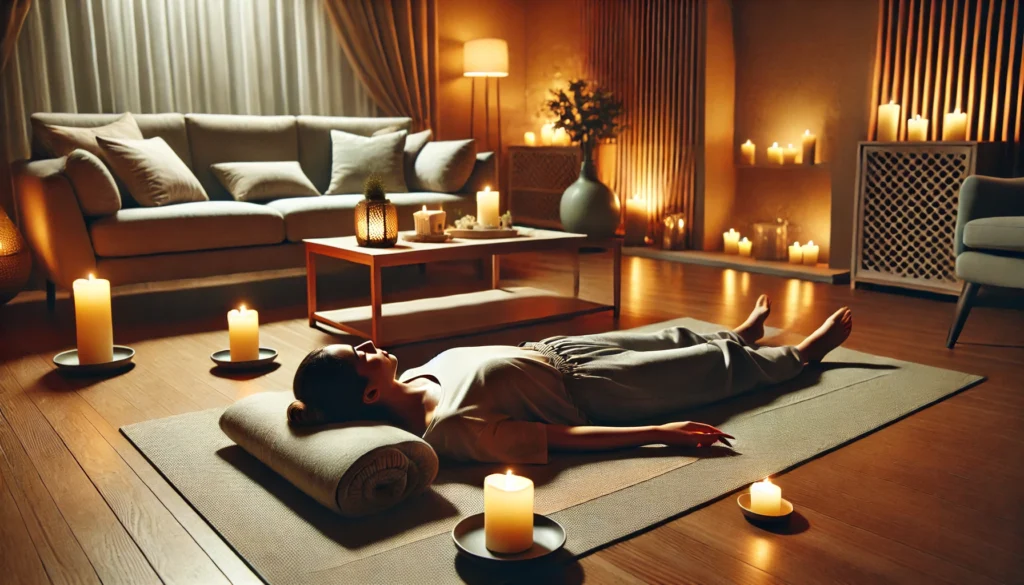Historical Context of JPMR
Dr. Jacobson’s pioneering work in the field of relaxation therapy laid the foundation for what we now know as Progressive Muscle Relaxation. His studies revealed that mental calmness could be achieved through physical relaxation, and he devised a method that systematically targeted muscle groups to reduce tension. This innovative approach has evolved into a cornerstone of relaxation therapies and is utilized worldwide to combat various stress-related conditions.
Dr. Jacobson’s methodology was initially met with skepticism but gradually gained acceptance as empirical evidence supported its efficacy. His work coincided with a broader movement in psychology that sought to integrate mind and body practices for holistic health benefits. Over the decades, his techniques have been refined and adapted for diverse therapeutic settings, from clinical environments to personal self-care routines.
Jacobson’s contributions also extended beyond individual therapy, influencing group settings and community health initiatives. His emphasis on the physical-mental connection has inspired numerous offshoots in relaxation techniques, reinforcing the enduring legacy of his work in modern-day stress management practices.
You may also like: Stress Relief: Sentences to Calm Your Mind
Progressive Relaxation Benefits
The benefits of engaging in JPMR are manifold. Primarily, it aids in reducing anxiety by promoting a state of calmness and tranquility. By focusing on the deliberate tensing and relaxing of muscles, individuals can improve their awareness of physical sensations, thus enhancing their ability to manage stress. Additionally, PMR is known to assist in the alleviation of tension headaches and migraines, improve sleep quality, and foster overall mental health well-being.
Regular practice of JPMR can lead to a marked decrease in physiological symptoms of stress, such as elevated heart rate and blood pressure. This physical response is complemented by cognitive benefits, including improved concentration, reduced rumination, and heightened emotional resilience. Over time, individuals often report a more profound sense of control over their stress reactions, contributing to a more balanced lifestyle.
Moreover, JPMR can serve as a preventive strategy, offering a proactive approach to stress management. By integrating this technique into daily routines, individuals can build a robust defense against stressors, reducing the likelihood of stress-related health complications. This proactive engagement with relaxation techniques underscores the preventive health benefits that JPMR can offer.
The Role of JPMR in Holistic Health
As society increasingly embraces holistic health paradigms, JPMR has found a prominent place in integrative health practices. Its alignment with principles of holistic wellness—emphasizing the interconnectedness of body and mind—makes it a valuable tool for comprehensive health strategies. Practitioners often incorporate JPMR alongside other modalities such as yoga, meditation, and mindfulness, creating synergistic effects that enhance overall well-being.
JPMR’s adaptability allows it to be tailored to individual needs, making it accessible to various populations, including children, the elderly, and individuals with specific health conditions. This flexibility ensures that JPMR remains relevant across diverse cultural and demographic contexts, contributing to its growing popularity in global health initiatives. As a cornerstone of holistic health, JPMR continues to inspire innovations in stress management and personal well-being.

How to Relax Tense Muscles: The JPMR Technique
Steps in Muscle Relaxation
The JPMR technique involves a series of steps that guide practitioners through the process of tensing and relaxing various muscle groups. Here’s a systematic approach:
1. Find a Quiet Space: Begin by selecting a calm environment where you can focus without distractions. Sit or lie down comfortably.
Creating the right environment is crucial for effective JPMR practice. Choose a space that feels safe and comfortable, free from interruptions or noise. Soft lighting and soothing music can enhance the ambiance, setting the stage for a more immersive relaxation experience. Consider using supportive pillows or mats to ensure physical comfort throughout the session.
2. Breathing and Centering: Take a few deep breaths, inhaling through your nose and exhaling through your mouth. Allow your body to settle into a relaxed position.
Breathing techniques play a vital role in preparing the mind and body for relaxation. Focus on deep, diaphragmatic breathing, allowing your abdomen to rise and fall naturally. This technique not only oxygenates the body but also signals the nervous system to enter a state of calm. As you breathe, visualize tension leaving your body with each exhale, creating a sense of inner peace and balance.
3. Focus on Muscle Groups: Start with your toes and work your way up to your head. Tense each muscle group for about 5-10 seconds, then relax for 15-20 seconds. Pay attention to the sensation of tension leaving your body.
- Feet and Toes: Curl your toes tightly, then release.
- Legs: Squeeze your calves and thighs, then let go.
- Abdomen: Tighten your stomach muscles, then relax.
- Arms and Hands: Clench your fists and flex your biceps, then release.
- Shoulders and Neck: Shrug your shoulders towards your ears, then drop them.
- Face and Jaw: Clench your jaw and scrunch your face, then relax.
Focusing on each muscle group requires mindful attention and patience. As you progress through each group, concentrate on the contrast between tension and relaxation, noting the sensations that arise. This heightened awareness fosters a deeper connection with your body, promoting a more profound sense of relaxation. If any area feels particularly tense, spend extra time on it, allowing the relaxation to permeate deeply.
4. Repeat and Reflect: Progress through each muscle group, repeating the process as needed. Reflect on the feeling of relaxation.
Repetition is key to mastering JPMR. By consistently practicing these steps, you reinforce the mind-body connection, making relaxation more accessible over time. After completing the cycle, take a moment to reflect on your experience. Consider journaling about the sensations and emotions you encountered, as this reflection can enhance your understanding of your stress patterns and relaxation responses.
How to Relax a Tense Body at Home
For those aiming to practice PMR at home, consistency is key. Setting aside dedicated time each day can lead to significant improvements in relaxation and stress management. Consider integrating PMR into your evening routine to enhance sleep quality, or use it as a midday reset to boost mental clarity and focus.
Designing a consistent practice schedule can significantly enhance the benefits of JPMR. Begin by identifying a time of day that aligns with your lifestyle, ensuring that it becomes a natural part of your routine. Evening sessions can aid in unwinding after a busy day, while morning practices may energize and prepare you for the challenges ahead. Experiment with different times to discover what works best for you.
Incorporating JPMR into your home environment can also involve creating a dedicated relaxation space. This could be a corner of a room with comforting elements such as blankets, candles, or plants. Personalizing this space can make your practice more inviting and enjoyable, encouraging regular engagement with the technique. Over time, this dedicated area may become a sanctuary for relaxation and self-care.
For those new to JPMR, guided resources can provide valuable support. Consider using audio or video guides to help structure your practice, offering step-by-step instructions and cues. These resources can be particularly beneficial in establishing a routine and building confidence in the technique. As you become more familiar with JPMR, you may find yourself naturally incorporating it into various aspects of your daily life.
JPMR for Anxiety and Stress Management
Muscle Relaxation Techniques for Anxiety
JPMR is particularly effective in managing anxiety by breaking the cycle of tension and stress that often exacerbates anxious feelings. By grounding oneself in the physical sensations of relaxation, individuals can cultivate a sense of control over their emotional responses.
Engaging in JPMR allows individuals to focus on the present moment, redirecting attention from anxiety-provoking thoughts to physical sensations. This shift in focus helps to interrupt the cycle of anxious thinking, providing a mental break and facilitating emotional regulation. Over time, individuals may develop a more positive outlook, as JPMR fosters a sense of empowerment and resilience.
The practice of JPMR can also enhance self-awareness, enabling individuals to identify early signs of anxiety and implement coping strategies proactively. By recognizing physical cues of stress, such as muscle tension or shallow breathing, practitioners can respond with targeted relaxation techniques before anxiety escalates. This proactive approach can reduce the frequency and intensity of anxious episodes, contributing to long-term emotional well-being.
PMR Therapy in Practice
Healthcare professionals often incorporate PMR into treatment plans for patients dealing with chronic stress, anxiety disorders, and other mental health challenges. Its non-invasive nature and ease of practice make it an accessible tool for individuals seeking to enhance their mental wellness.
PMR is frequently used in conjunction with other therapeutic modalities, such as cognitive-behavioral therapy (CBT) or mindfulness-based interventions, to provide a comprehensive approach to mental health care. This integration allows practitioners to address both cognitive and physiological aspects of stress, creating a more holistic treatment plan. As a complementary therapy, PMR can enhance the effectiveness of traditional mental health interventions.
In clinical settings, PMR is often tailored to meet the unique needs of each patient, considering factors such as their specific stressors, lifestyle, and personal preferences. This individualized approach ensures that PMR is both effective and sustainable, promoting long-term adherence and positive outcomes. By empowering patients to take an active role in their stress management, PMR fosters a sense of ownership and self-efficacy in the healing process.
As PMR gains recognition in the mental health field, ongoing research and clinical trials continue to explore its potential applications. Emerging studies are investigating its efficacy in diverse populations and settings, including schools, workplaces, and community health programs. These efforts highlight the growing appreciation for PMR as a versatile and impactful tool in promoting mental health and well-being.

Future Implications of JPMR
Current Trends and Scientific Research
Recent advancements in neuroscience have highlighted the mind-body connection, reinforcing the principles underlying PMR. Studies have demonstrated that regular practice can lead to neuroplastic changes in the brain, supporting resilience against stress and enhancing emotional regulation.
Neuroscientific research suggests that JPMR may influence brain structures associated with stress response, such as the amygdala and prefrontal cortex. By promoting relaxation, JPMR may help modulate activity in these areas, reducing stress reactivity and improving emotional regulation. This evidence supports the potential for JPMR to contribute to long-term mental health benefits, including reduced risk of stress-related disorders.
In addition to its impact on brain function, JPMR has been linked to various physiological benefits, such as improved immune function and reduced inflammation. These findings underscore the interconnectedness of mental and physical health, highlighting the potential of JPMR to support overall well-being. As scientific understanding of the mind-body connection continues to evolve, JPMR remains a valuable area of exploration for researchers and practitioners alike.
Future Directions in Relaxation Therapies
As interest in holistic health and wellness grows, JPMR is poised to play an increasingly significant role in integrative health practices. Its adaptability to various settings and populations makes it a valuable tool in the quest for optimal mental and physical well-being.
Emerging trends in relaxation therapies emphasize the integration of technology and personalized approaches to enhance accessibility and effectiveness. Innovations such as virtual reality (VR) and biofeedback are being explored as potential complements to JPMR, offering interactive and immersive experiences that deepen relaxation. These technological advancements have the potential to expand the reach of JPMR, making it more accessible to diverse populations.
Moreover, as public awareness of mental health continues to rise, there is a growing demand for evidence-based relaxation techniques that can be easily incorporated into daily life. JPMR’s simplicity and adaptability make it well-suited to meet this demand, providing individuals with a practical tool for managing stress and enhancing well-being. As relaxation therapies continue to evolve, JPMR is likely to remain a cornerstone of holistic health practices, inspiring new approaches to stress management and personal care.
As we look to the future, continued research and innovation in relaxation therapies will be essential to unlocking the full potential of JPMR. By exploring new applications and refining existing techniques, practitioners can ensure that JPMR remains a relevant and effective tool for promoting mental and physical health in an ever-changing world. Through collaboration and exploration, the field of relaxation therapy will continue to grow, offering new possibilities for enhancing well-being and resilience.

Practical Advice for Beginners
For those just starting with JPMR, patience and persistence are essential. It may take several sessions to fully experience the benefits of this relaxation technique. Consider these tips to enhance your practice:
Start Small and Build Gradually
Begin with brief sessions and gradually increase the duration as you become more comfortable with the technique.
Starting small helps to build confidence and ensures that the practice feels manageable and enjoyable. Initially, set aside just 5-10 minutes for your JPMR practice, allowing yourself to become familiar with the process without feeling overwhelmed. As you grow more comfortable, gradually extend the duration of your sessions, exploring different muscle groups and techniques. This gradual approach fosters a sustainable practice that can be easily integrated into your daily routine.
Consistency is Key
Aim to practice PMR regularly, even if only for a few minutes each day.
Consistency is crucial for reaping the full benefits of JPMR. By making relaxation a daily habit, you create a foundation for long-term stress management and well-being. Consider setting a specific time each day for your practice, whether it’s in the morning, during a lunch break, or before bed. Consistent practice helps to reinforce the relaxation response, making it easier to access during times of stress. Over time, this regular engagement with JPMR can lead to lasting improvements in mental and physical health.
Seek Guidance and Support
If needed, consult resources or professionals for guided sessions or additional support.
For beginners, guided sessions can provide valuable structure and support, helping to build confidence and understanding of the technique. Consider seeking out audio or video resources, as well as books or online courses, to deepen your knowledge and practice. Additionally, working with a trained professional or attending a workshop can offer personalized guidance and feedback, enhancing your experience and ensuring that you practice JPMR safely and effectively. By seeking out resources and support, you can enrich your JPMR journey and maximize its benefits for your well-being.
In conclusion, JPMR relaxation offers a powerful and accessible method for achieving muscle relaxation and managing anxiety. By incorporating this technique into your daily routine, you can cultivate a more relaxed and resilient body and mind, paving the way for enhanced overall health and well-being.
Further Reading:
Everything You Need To Know About Progressive Muscle Relaxation
Important Note: The information contained in this article is for general informational purposes only, and should not be construed as health or medical advice, nor is it intended to diagnose, prevent, treat, or cure any disease or health condition. Before embarking on any diet, fitness regimen, or program of nutritional supplementation, it is advisable to consult your healthcare professional in order to determine its safety and probable efficacy in terms of your individual state of health.
Regarding Nutritional Supplements Or Other Non-Prescription Health Products: If any nutritional supplements or other non-prescription health products are mentioned in the foregoing article, any claims or statements made about them have not been evaluated by the U.S. Food and Drug Administration, and such nutritional supplements or other health products are not intended to diagnose, treat, cure, or prevent any disease.


